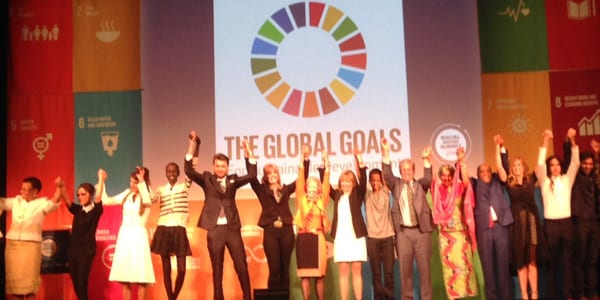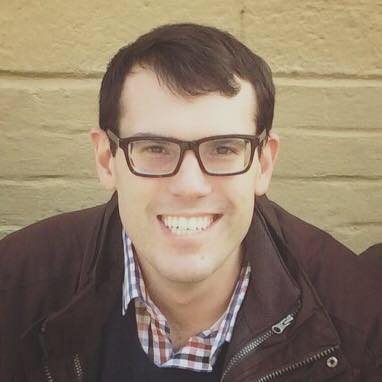 Imagine if there was a 15-year-old time capsule opened at the United Nations during their announcement of the new Sustainable Development Goals (SDGs) a few weeks ago. The capsule, commemorating the charter of the SDG’s predecessor, the Millennium Development Goals (MDGs), would be filled with relics of yesteryear—a disposable camera, WordArt, an N’ Synch album—an old dial-up modem that allowed for as much “social networking” as instant messaging and email.
Imagine if there was a 15-year-old time capsule opened at the United Nations during their announcement of the new Sustainable Development Goals (SDGs) a few weeks ago. The capsule, commemorating the charter of the SDG’s predecessor, the Millennium Development Goals (MDGs), would be filled with relics of yesteryear—a disposable camera, WordArt, an N’ Synch album—an old dial-up modem that allowed for as much “social networking” as instant messaging and email.
This was the year 2000—the millennium, a new age ripe with expectation for the digital era, as well as the hope for what could be achieved through a global partnership to reduce extreme poverty.
Only recently have the forces of digital connectivity and collaboration to address societal challenges synergized in such profound ways. From people and brands challenging their online networks to the ALS ice bucket challenge to people harnessing the social sphere to track down and help Syrian refugees—global citizens are using the social web for social good.
As it relates to the SDGs, the UN hopes to capitalize on that expanding social-web-for-social-good connectivity. And that is the central theme behind the Mashable Social Good Summit that I attended in New York. The event coincided with the UN General Assembly and a number of other like-minded events, such as the Clinton Global Initiative.
What made the Mashable Summit different was that it was really geared towards a global “connected” audience—live-streamed to 109 countries and simultaneously translated into five languages. If you are going to inspire the global population to help advance your goals, you have to meet them where they are—online—and you have to be engaging (click to tweet).
Here are a few of my observations from the Summit:
- Progress requires this AND that
The SDGs are interdependent, and thus require support from a diverse range of people with varying interests—whether environmental or poverty or corporate governance, as noted by Richard Curtis, director, writer, producer and founder of Project Everyone, which aims to engage (you guessed it)—everyone in support of the SDGs. The initiative requires involvement from all stakeholders, both private sector as well as public.
- Authenticity is social currency
In order to stay purpose-driven and motivated—and inspire that sensibility within others—it’s imperative to live and act authentically with the social issues you are championing. For brands, authenticity is vital to establishing credibility within their online communities. When it comes to supporting a SDG (or any social impact, CSR or sustainability program) it’s paramount to stay true to the business’ purpose—leading through real, substantive action before external communication.
- “Tell everyone” is a critical step
On the Summit stage, notable influencers and celebrities, such as Victoria Beckham and Ashley Judd, urged participants to “tell everyone” about each of the 17 goals. In order to gain momentum, a critical mass of engaged online users will be required. As communicators, we know the risks of how negative information can proliferate online and in media. How can we generate the kind of stories and content around good or positive information that could be catapulted, with similar velocity, into the social space?
- “Everyone” means offline too
An important tenant in the SDGs is that everyone has a voice, especially in countries less connected than most. Ricardo Fuentes, executive director of Oxfam Mexico, laid out a compelling case for the need for better data offline for oftentimes marginalized populations in order to better address their needs. As Wikimedia Foundation founder Jimmy Wales reminded the audience, with the next billion people expected to come online in the next five years, there is a significant opportunity to listen to, and work with, these new users on the goals that are particularly salient to them. This presents another unique opportunity for brands to connect and engage with what will undoubtedly be new consumers in the online marketplace.
It’s an incredible scenario to conceptualize—another BILLION people connected—expanding the exchange of ideas and voices to engage, support and debate the goals put forth in the SDGs. Equally fantastical is to imagine how consumers, organizations and brands will use the internet and our social influence to do more good for the world.
What will that look like in 2030? And how will we look back upon our (more primitive) digital selves? Let’s create a time capsule to remember this moment.



